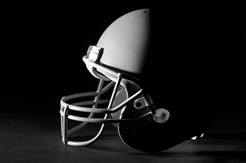Campus Technology, one of the top information sources for higher education news, recently presented its annual Innovators Awards. Four of the 12 national awards presented went to universities in the Hoosier state.
IT Infrastructure and Systems
Indiana University
Project: One.IU (OneCampus)
Project Lead: Eric Westfall, enterprise software architect
Vendors/technologies: Developed in-house, rSmart
Category description: IT Infrastructure and Systems (including, but not limited to): learning management systems; collaboration technologies and environments; learning space design/architecture/smart classrooms; classroom management and control systems; data security and authentication; networking; SaaS and cloud computing; telecommunications; digital repositories/digital libraries; high-performance computing; green technologies; disaster recovery and business continuity; help desk.
Student Systems and Services
Ball State University
Project: Ball State Achievements
Project Lead: Kay Bales, vice president for student affairs and dean of students
Vendors/technologies: Developed in-house
Category description: Student Systems and Services (including, but not limited to): technology for career services; advising/online advising; technology for housing; physical security and emergency planning; eTextbooks/bookstore; instructional resources and library services; recruitment/eRecruitment.
Teaching and Learning
University of Notre Dame
Project: E-Portfolios With Evidenced-Based Badges
Project Lead: G. Alex Ambrose, associate professor of the practice and associate director of e-portfolio assessment
Vendors/technologies: Credly, Digication
Category description: Teaching and Learning (including, but not limited to): learning design/instructional design; immersive technologies; social software, Web 2.0; mobile learning; teaching in the smart classroom; collaboration tools; student assessment; student ePortfolios; lecture capture; eLearning; accessibility.
Education Futurists
Ball State University
Project: The Traveler
Project Lead: Kyle Parker, senior software engineer for developing technologies
Vendors/technologies: Developed in-house
Category description: Education Futurists (including, but not limited to): visionary learning technology development; new program development; institutional reformation; trend spotters: technology and society.

 Kudos to the Indiana University Kelley School of Business for the recent announcement of a partnership with the National Football League Players Association. Career development, certificate and degree graduate level program options are part of the mix for current and former players.
Kudos to the Indiana University Kelley School of Business for the recent announcement of a partnership with the National Football League Players Association. Career development, certificate and degree graduate level program options are part of the mix for current and former players. Lee Hamilton asked and answered a most important question to an audience of nearly 500 people at Wednesday night’s 2012 Indiana Chamber Legislative Dinner.
Lee Hamilton asked and answered a most important question to an audience of nearly 500 people at Wednesday night’s 2012 Indiana Chamber Legislative Dinner. "Incite Innovation" is the theme for the 66th Annual IU Kelley Business Conference. The event promises to "examine the key issues American firms soon will face and how that future will impact society and the way it does business, requiring creative thinking and innovation strategies for American business leaders to successfully engage and adapt to the future."
"Incite Innovation" is the theme for the 66th Annual IU Kelley Business Conference. The event promises to "examine the key issues American firms soon will face and how that future will impact society and the way it does business, requiring creative thinking and innovation strategies for American business leaders to successfully engage and adapt to the future." Many of today’s business success stories started with an Indiana University business education. But very few grads can claim to be as interesting — and controversial — as Mark Cuban.
Many of today’s business success stories started with an Indiana University business education. But very few grads can claim to be as interesting — and controversial — as Mark Cuban..jpg) More of a light-hearted story here about a state school, but as an IU grad, I’d like to weigh in on the IU mascot debate featured in
More of a light-hearted story here about a state school, but as an IU grad, I’d like to weigh in on the IU mascot debate featured in  The following is a guest blog by Philip Cochran, associate dean of Indianapolis operations for the Kelley School of Business:
The following is a guest blog by Philip Cochran, associate dean of Indianapolis operations for the Kelley School of Business: This is just wild. According to Indiana University researchers, Twitter may be the
This is just wild. According to Indiana University researchers, Twitter may be the  As an IU alum and football fan, this was obviously of great interest to me. The
As an IU alum and football fan, this was obviously of great interest to me. The